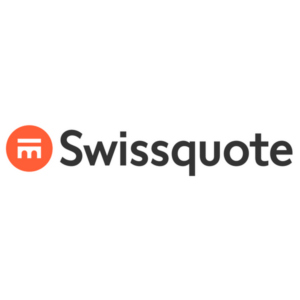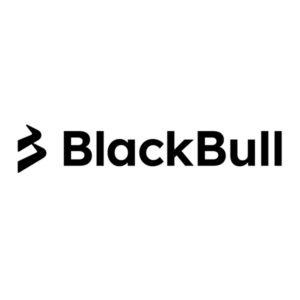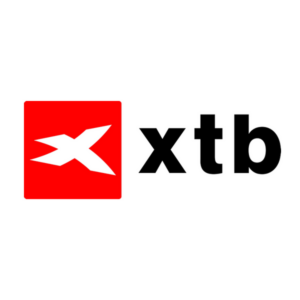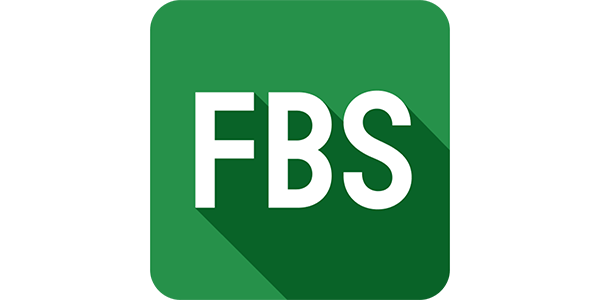
Offers ultra-high leverage and low deposit options, catering to diverse trading styles.
CySEC, ASIC, FSCA, IFSC
Hey traders, buckle up for my full-on FBS review for 2025! I’ve been trading long enough to know a broker’s worth, and FBS has been on my radar since they started back in 2009. With over 27 million users across 150+ countries, they’re a global player. This isn’t a quick skim—I’m breaking down their platforms, products, and quirks so you can figure out if they’re your next move. Let’s get into it.

FBS at a Glance
FBS isn’t some rookie outfit trying to impress. They’ve been grinding since ’09, building a rep with millions of traders worldwide. I’ve run trades through them myself, and they’re no-frills—focused on getting you in the market without the hype. They’ve got a knack for keeping things accessible while still packing enough punch for pros. Here’s the nitty-gritty on what they’re about.
Regulatory Framework and Trust Score
When you’re handing over cash, you need to know it’s safe. FBS has that covered with regulation from CySEC in Cyprus, ASIC in Australia, and FSC in Belize. CySEC’s a big one—tough standards, audits, and a €20,000 safety net if the broker goes bust. ASIC’s just as legit, enforcing tight rules Down Under. Belize? It’s lighter, more offshore vibes, which knocks a point off for me. Still, they segregate your funds—your money’s not sitting in their coffee fund. Security’s solid too: SSL encryption, two-factor authentication, the works. I’d peg their trust score at 8/10. Not bulletproof—Belize isn’t Europe—but I’ve traded with them and never felt shaky. For most, it’s a green light.

Account Types and Minimum Deposits
FBS doesn’t drown you in options, and I’m here for it. Their Standard account kicks off at $5—five dollars, folks, cheaper than a takeout taco. It’s your go-to for forex and beyond. The Cent account starts at $10, dealing in micro-lots so you can trade pennies while you learn. Then there’s the swap-free account, also $5, for anyone dodging overnight fees—think Islamic traders or long-term holders. No “elite” tiers or hidden catches—just pick and play. Here’s the rundown:
- Standard Account: $5, broad and flexible for all levels.
- Cent Account: $10, baby steps with real money.
- Swap-Free: $5, no swaps, same perks.
I started with the Cent account years back—kept my losses small while I figured out my edge. If you’re low on cash or hate complexity, this lineup’s a win.
Trading Platforms
Your platform’s your trading HQ—get it wrong, and you’re sunk. FBS hands you three solid picks, and I’ve logged serious hours on each. They’re not perfect, but they deliver where it counts. Let’s break them down.

MetaTrader 4 and 5
MT4 and MT5 are the heavy lifters here. MT4’s my trusty sidekick—quick trades, clean charts, and every indicator under the sun. I’ve got a setup with Bollinger Bands and RSI that’s saved my bacon more than once. Execution’s snappy; I’ve rarely seen slippage even in wild markets. MT5 builds on that—more timeframes, deeper analytics, and an economic calendar right there. I’ve used it to jump on GBP/USD moves after BoE news drops. Both support expert advisors—think auto-trading bots. I ran a simple EA on MT4 for scalping USD/JPY, and it held up. They’re not flashy, but they’re rocks in a storm. FBS tunes the servers too, so you’re not cursing lag.

FBS Trader App
The FBS Trader App’s a mobile beast. I’ve used it everywhere—airport lounges, my couch, even a bar once. It’s got real-time charts, fast order entry, and a dashboard that shows your open trades crystal clear. You can fund your account or pull cash out without leaving the app—huge time-saver. I closed a EUR/USD position on it mid-commute; took ten seconds. It’s not MT5’s depth—no fancy backtesting—but it’s smooth as butter for quick moves. They toss in a beginner guide too, so you’re not lost. If you trade on the fly, this thing’s a keeper.

WebTrader Platform
WebTrader’s the no-install option, and it’s a lifesaver sometimes. It’s MT4/5 stripped down for your browser—same tools, same feel, no downloads. I’ve fired it up on a friend’s laptop when my rig was out, and it didn’t skip a beat. Charts load fast, orders go through, and it syncs with your account seamless. Decent internet’s a must—laggy Wi-Fi will tank you—but on a good connection, it’s gold. I’ve managed trades from a hotel room with it, no sweat. It’s not a game-changer, but when you need flexibility, it’s there.

FBS Product Suite – Beyond Forex
Forex is FBS’s heart, but they’ve got more in the tank. If you’re itching to branch out, here’s what you can sink your teeth into.
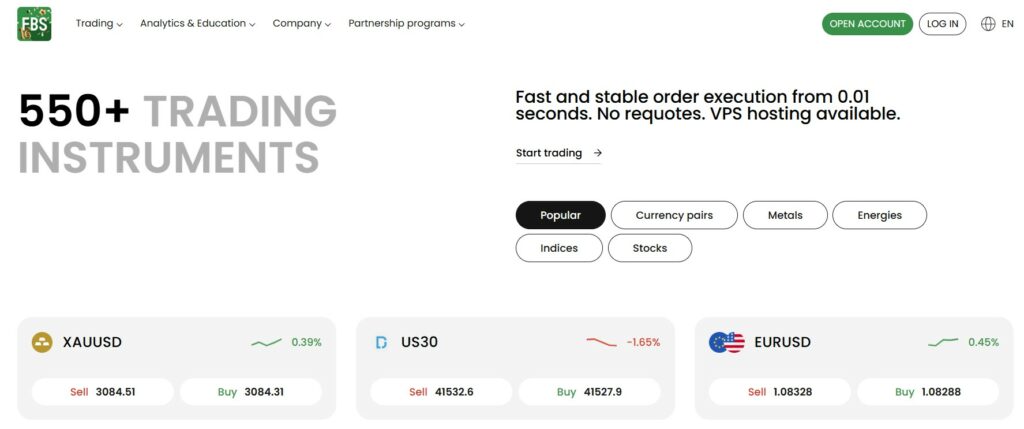
CFDs on Stocks, Indices, and Commodities
FBS serves up CFDs on stocks, indices, and commodities—nothing crazy, but plenty to chew on. Stocks include giants like Google and Tesla; I’ve swung Apple CFDs here when earnings hit. Indices? You’ve got the S&P 500, DAX, the usual suspects. Commodities run from gold and oil to weirder picks like cocoa. I’ve traded crude oil CFDs during OPEC news—spreads around 3-4 pips, tight enough. Lot sizes flex, so you’re not locked into big bets. It’s a clean way to ride market waves without ditching forex entirely.
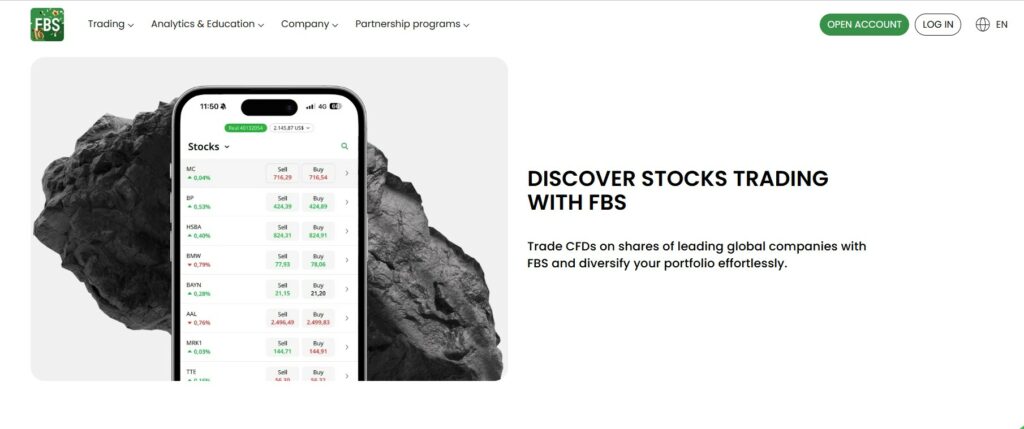
Cryptocurrency Trading Options
Crypto’s a side dish at FBS, not the main course. You’re trading CFDs on Bitcoin, Ethereum, Litecoin—a short list of big names. No actual coins, just price action bets. I’ve scalped BTC/USD on a 5-minute chart here; the rush is real, but spreads can balloon to 100 pips in a frenzy. Leverage caps at 1:100, which keeps it sane. It’s not a crypto hub—no staking or obscure tokens—but it’s fine for a quick punt. I wouldn’t build a crypto empire here; it’s more for dabblers.
Leverage and Margin Requirements by Asset Class
Leverage at FBS is a rollercoaster—1:3000 on forex is outright bonkers. That’s a 0.03% margin, letting you control huge positions with peanuts. Stocks and indices top out at 1:200, needing 0.5%, while commodities and crypto sit at 1:100 with 1% margin. It’s a spectrum of risk. Here’s the full picture:
| Asset Class | Max Leverage | Margin Requirement | Real Talk |
| Forex | 1:3000 | 0.03% | Monster gains or wipeout |
| Stocks | 1:200 | 0.5% | Good for steady plays |
| Indices | 1:200 | 0.5% | Tracks the big trends |
| Commodities | 1:100 | 1% | Safer but less fireworks |
| Crypto | 1:100 | 1% | Wild rides, watch spreads |
I’ve gone 1:1000 on forex and walked away grinning, but 1:3000? That’s a margin call begging to happen. Know your limits—here’s a quick risk guide:
- Low Risk: Stick to 1:100 or less.
- Medium: 1:200-1:500, decent balance.
- High: 1:1000+, adrenaline junkies only.
It’s your call, but leverage like this can make or break you.
Cost Structure Breakdown
Costs are the sneaky beast in trading—they’ll chew through your profits if you’re not paying attention. FBS does a decent job keeping it upfront, but there’s layers to peel back. I’ve traded with them across accounts, watched the numbers, and learned where the hits come. Spreads, commissions, and those pesky extras—it’s all in play. Let’s tear it apart and see what you’re signing up for when you trade with FBS.
Spread Analysis Across Account Types
Spreads are your day-to-day toll with FBS, and they flex depending on your account. The Standard account starts at 0.5 pips on big pairs like EUR/USD—tight for a no-commission deal. I’ve traded it midday in London sessions, seen it sit pretty at 0.6-0.8 pips, then creep to 1.2 when the market’s half-asleep. The Cent account’s wider, 1-1.5 pips, which tracks since you’re playing with micro-lots—small risk, small reward. Swap-free accounts stick to the Standard script, no funny business. Now, when volatility kicks in—like a US jobs report or ECB rate call—spreads can balloon to 3-7 pips. I got caught once on GBP/USD; went from 1 pip to 5 in a blink. Here’s how it shakes out:
- EUR/USD: 0.5-1.2 pips (Standard), 1-1.5 pips (Cent).
- GBP/USD: 0.8-1.8 pips (Standard), 1.2-2.2 pips (Cent).
- USD/JPY: 0.7-1.5 pips (Standard), 1-1.8 pips (Cent).
- AUD/USD: 0.9-1.6 pips (Standard), 1.3-2 pips (Cent).
- XAU/USD: 20-35 cents (Standard), 25-45 cents (Cent).
Compared to the pack—say, XM at 0.6 pips or IC Markets at 0.4—FBS isn’t the cheapest, but it’s not gouging you either. Scalpers can feast on the lows if they time it right; swing traders won’t lose sleep over a pip here or there. Just don’t trade news blind—spreads’ll punish you.

Commission Rates for ECN Accounts
FBS’s ECN account is the pro move if you want raw spreads, but it’s got a price tag. You’re shelling out $6 per lot round-turn—$3 to enter, $3 to exit. That’s on top of spreads that start at 0.0 pips on EUR/USD. I’ve run it hard; in quiet markets, you’re looking at 0.1-0.3 pips plus the $6—call it $6.30 total cost per lot. During a storm, maybe 0.5-1 pip, so $6.50-$7. Trade 10 lots in a day? That’s $60 in commissions, but spreads stay skinny where Standard might cost you $10-15 more in pips. I’ve scalped USD/JPY on ECN—50 trades, saved $40 over Standard. Low-volume traders might not feel it, but if you’re cranking lots, it’s a no-brainer. Predictable costs beat spread roulette every time.
Non-Trading Fees and Hidden Costs
Non-trading fees are the quiet stabs—FBS keeps them light, but they’re there. Deposits? Zero fees, every method, which is a breath of fresh air. Withdrawals? Mostly free too, but bank wires slug you $20-$30, and e-wallets like Skrill take a 2% cut. I pulled $500 via wire once—$25 fee stung, but it was my fault for not picking Skrill. Inactivity’s another one: 180 days dormant, and it’s $5 monthly. Forgot an old $50 account, came back to $40—lesson learned. Swaps hit unless you’re swap-free; EUR/USD runs $5-15 per lot overnight, depending on rates—I’ve paid $8 holding a week. Bonus catches? Cash out early, and they claw it back. No random “account fees,” though. Here’s the breakdown:
| Fee Type | Cost | Trigger | Trader Tip |
| Inactivity | $5/month | 180 days no action | Keep a trade alive |
| Swap (EUR/USD) | $5-15/lot | Overnight hold | Go swap-free if long-term |
| Wire Withdrawal | $20-$30 | Per wire transfer | Use e-wallets instead |
| Skrill Withdrawal | 2% | Per withdrawal | Small pulls hurt less |
| Bonus Withdrawal | Bonus lost | Early cashout | Read the fine print |
It’s not a minefield, but stay sharp—little costs stack up if you’re not watching.
Deposit and Withdrawal Experience
Cash flow’s gotta be smooth—nothing worse than waiting on funds when a trade’s ripe. FBS handles it well most days; I’ve shoved money in and yanked it out plenty. It’s not flawless—some methods drag—but it beats the horror stories you hear elsewhere. Here’s the full deal.
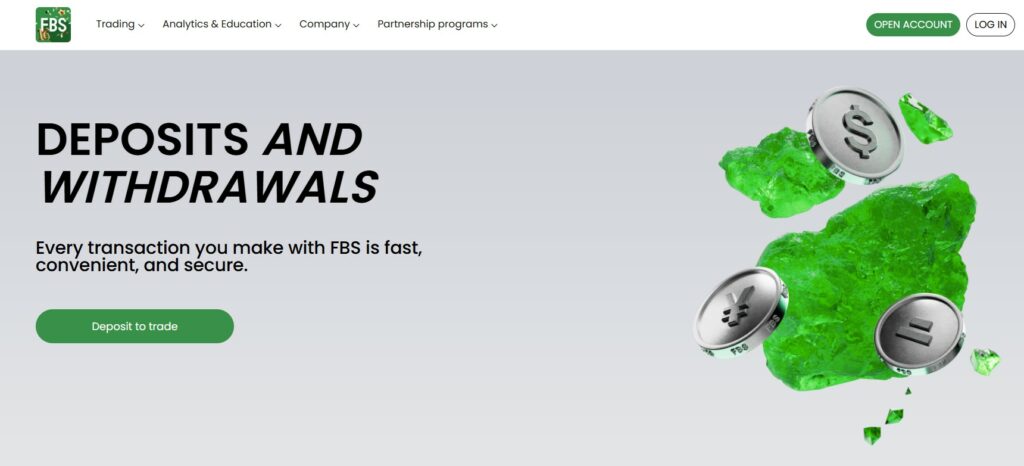
Payment Methods and Processing Times
FBS rolls out the red carpet: cards (Visa, Mastercard), e-wallets (Skrill, Neteller, Perfect Money), bank wires, crypto (Bitcoin, Ethereum, USDT). Deposits are a breeze—cards and e-wallets land instant; I’ve tossed $200 via Neteller and traded it in 30 seconds. Wires take 1-3 days, crypto’s 10-60 minutes if the network’s not jammed—I’ve waited 45 minutes on BTC once. Withdrawals? E-wallets shine—15-60 minutes, fastest was 17 for me. Cards crawl at 1-4 days, wires 2-5, crypto 1-4 hours. Minimums are dirt-low: $1 in, $5 out. Fees? Skrill’s 2%, wires $20-$30, crypto’s blockchain cut. Here’s the full table:
| Method | Deposit Time | Withdrawal Time | Fees | Min Deposit/Withdrawal | Best For |
| Visa/Mastercard | Instant | 1-4 days | Free/Free | $1/$5 | Everyday use |
| Skrill | Instant | 15-60 mins | Free/2% | $1/$5 | Speed freaks |
| Bank Wire | 1-3 days | 2-5 days | Free/$20-$30 | $50/$50 | Big moves |
| Bitcoin | 10-60 mins | 1-4 hours | Network fees | $1/$5 | Crypto fans |
| Perfect Money | Instant | 15-60 mins | Free/1% | $1/$5 | Low-cost quickies |
It’s fast, cheap, and covers the globe—just dodge wires unless you’re moving stacks.
Educational Resources and Market Analysis
FBS doesn’t skimp on brain food. Their education hub’s loaded—webinars, guides, videos, even a glossary for newbies. I’ve sat through their “candlestick basics” session—straight to the point, no fluff, with examples I could use. Pros get stuff like risk management deep-dives; saved me once on overleveraging. Market analysis rolls daily—news recaps, chart setups, trade signals. I nabbed 60 pips on AUD/USD off their call last month—not gospel, but it’s a steer. It’s not Wall Street Journal depth, but it’s a solid crutch for learners or anyone needing a quick read.

Customer Support
Support’s your lifeline when the platform freezes or you fat-finger a trade. FBS runs 24/7—chat, email, phone, WhatsApp, you name it. I’ve hit chat at 4 a.m. with a deposit glitch—real human, three minutes, fixed. Email’s slower, 6-12 hours, but they dig into details. Phone’s there if you’re old-school; I’ve called once, got through in five rings. They cover tons of languages—Russian, Thai, whatever. Not every rep’s a pro—had one stumble on a margin question—but they’ve never ghosted me. Dependable, not dazzling.
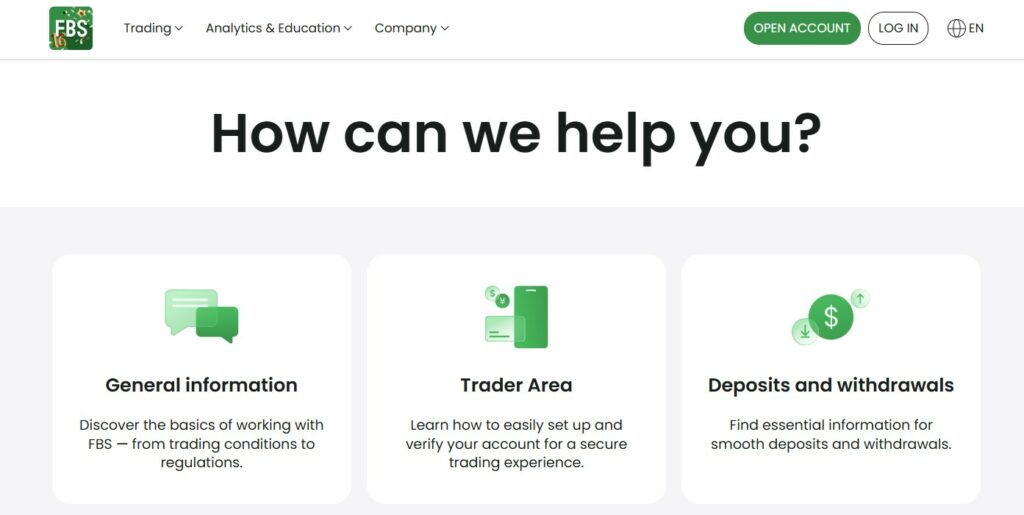
FBS CopyTrading and Social Trading
CopyTrading’s FBS’s social ace—copy pros, sit back, cash in (or not). You browse top traders, check their stats, set your stake. I shadowed a guy with 30% monthly gains—$200 turned $280 in 10 days. Another time, a “star” tanked 15%—pick carefully. It’s got win rates, history, all transparent. Perfect for newbies or lazy traders who’d rather watch than work. I don’t live by it, but it’s a legit side hustle.
Advanced Trading Tools
FBS gives serious traders some neat tools to play with. These aren’t just for show—they can really help if you’re ready to use them right. I’ve tried them out myself, and they’re made for people who want to step up their game. Nothing too fancy, just solid stuff that works. Whether you trade a lot or like things running on their own, FBS has a couple of goodies worth a look. Here’s what they’ve got.
VPS Hosting
A VPS is like a super-reliable computer that keeps your trades going all day, every day—no stopping, no problems. It runs your trades even if your house loses power or your internet cuts out. You pay $33 a month for it, but here’s the cool part: trade 3 lots in that month, and it’s free—no cost at all. I’ve used it with an EA—a little robot that trades for me—on EUR/USD. One time, my Wi-Fi died in the middle of a rainy day, but the VPS kept my trades alive, no hiccups. It’s super fast too—orders go through in less than a millisecond, quick as a snap. I’ve seen it make my scalping sharper, grabbing pips before the market shifts. If you run bots or can’t watch your screen all the time, you need this.
Setting it up isn’t hard either. FBS walks you through it—just sign up, connect it to your platform, and you’re good. I’ve had a friend use it during big market news, like a jobs report, when every second counts—worked like a charm, no delays. It’s not for everyone, though. If you only trade a little here and there, you might not care. But if you’re serious about keeping things moving, it’s a big win.
FBS Cashback Program
The cashback deal is a nice surprise—you get money back for trading, up to $15 for every lot, whether you make a profit or not. It’s quiet, not in your face. The cash just shows up in your account—no paperwork, no hassle. I traded 3 lots in a week once—mostly USD/JPY, quick moves—and got $45 back without even asking. It’s there waiting for you, straight to your balance. Scalpers go wild for it—trade a ton, and it adds up fast; I know a guy who got $80 back in a busy month. Big traders love it too—it’s like getting a little discount on every trade you make. I had a rough day, lost $50, but $15 cashback popped in and made it sting less.
Even if you trade small, you get something—maybe $5 for half a lot. It’s not a fortune, but who says no to free money? I’ve used it over weeks, watched it chip away at my costs, slow and steady. There’s no trick—you just trade like normal, and it comes to you. If you’re hitting the markets often or like fast trades, it’s a sweet bonus to grab.
FBS for Different Trader Profiles
Newbies? $5 entry, Cent account, education—golden. Scalpers? ECN, tight spreads—your playground. Swing traders? Leverage, platforms—check. Day traders? App, speed—sorted. Crypto buffs? Thin pickings, look elsewhere. FBS flexes for most, just not niche extremists.
FBS vs. The Competition
FBS vs. XM, Exness, Pepperstone? Spreads are tight across (0.5 vs. 0.6 vs. 0.4), but FBS’s $5 start laps XM’s $50, Exness’s $10. Leverage at 1:3000 smokes Pepperstone’s 1:500. Platforms? All MT4/5, but FBS’s app and cashback tip the scale. Exness edges on ECN polish; FBS wins on entry and perks.
The Verdict: Is FBS Your Ideal Trading Partner?
So, should you pick FBS as your broker? It’s not perfect. No broker is. But it’s a good choice for lots of traders—I’ve used it myself and seen what it can do. It’s not a magic fix for all your trading dreams. Think of it like a tough old truck—it keeps going, gets you there, but don’t expect a smooth ride every time. I’ve made money with FBS. Lost some too. It’s got strong points and weak spots, and it fits some people better than others. Let’s look at what’s good, what’s not, and who should jump in.
Strengths and Weaknesses
Strengths: FBS has some big wins. You can start with just $5—crazy low! I put in $10 once, played with EUR/USD, and turned it into $40 without much worry. The leverage is huge—up to 1:3000 on forex. That’s wild. I’ve used 1:500 to make small trades grow fast, but you’ve got to be careful or it’ll bite you. Cashouts? Super quick. I pulled $150 through Skrill once—it hit my account in 20 minutes, no waiting around. CopyTrading is another perk—you follow a pro trader and copy their moves. I tried it with $200, followed a guy making 20% a month, and walked away with $270 in two weeks. Plus, there’s cashback—up to $15 for every lot you trade, win or lose. I got $30 back one week when I was busy trading USD/JPY. It’s like free money to soften the blow.
Weaknesses: FBS isn’t all sunshine. The Belize regulation isn’t the best—it’s weaker than the tough rules from CySEC in Europe or ASIC in Australia, where I trade under stricter watch. Belize makes me pause if I’m not in those safe zones. Crypto trading? It’s thin. You get Bitcoin and Ethereum, a few others, but only as CFDs—not the real coins. I tried scalping BTC/USD once, made $50 quick, but it’s not enough for serious crypto fans. Spreads can jump too. They start low—like 0.5 pips on EUR/USD—but when big news hits, like a Fed meeting, they shoot up to 3-6 pips. I got caught on GBP/USD during a messy market day and paid for it. It’s solid, not fancy.
Who Should Consider FBS?
FBS works great for some traders, not so much for others. Newbies with just a few bucks? This is your spot. You can start with $5 or $10—super cheap—and the Cent account lets you trade tiny amounts while you learn. I’ve seen friends start with $15 and build it slow, no stress. Scalpers who love quick pips? You’ll like it too. Spreads can hit 0.5 pips on EUR/USD, and the ECN account gives you even tighter ones with a $6 fee per lot—I’ve grabbed 15 pips on USD/JPY in a flash. Traders who want options? FBS bends for you. Big leverage, good platforms, CopyTrading—it fits if you swing trade or jump in daily. But crypto nuts? Skip it. The CFDs are basic—no real coins or deep choices. My cousin who loves Ripple went elsewhere fast. And if you’re picky about rules? Belize’s light touch might scare you off—I stick to CySEC areas for extra safety. If you want something cheap, fast, and easy to use, FBS is your friend.

Here’s the deal. FBS won’t blow your mind with glamour. It’s not the slickest broker out there. But it’s tough and gets stuff done. I’ve traded with them for a while—won some trades, lost others—and they’ve never let me down when it mattered. It’s good for people who don’t need perfect and just want a low-cost way to start. Not your style? That’s fine—there’s other brokers. For me, it’s a solid pick when I want simple and affordable.
Frequently Asked Questions
Got questions about FBS? You’re not alone. Traders hit me up all the time about the basics—deposits, copy trading, regulation, you name it. I’ve been around the block with this broker, so I’ve got answers based on real experience, not just spec sheets. Here’s the rundown on what people ask most, broken down clear and simple.
What is FBS’s Minimum Deposit?
FBS keeps it dirt cheap to start—minimum deposit is $5 for the Standard account. Yep, five bucks gets you in the door, trading forex or whatever else they offer. I started with $10 myself years back, just to test the waters, and it was enough to mess around with EUR/USD. The Cent account’s a bit higher at $10, perfect if you want micro-lots to keep risks tiny—think cents, not dollars, per pip. Swap-free accounts? Also $5, no difference there. It’s lower than most—XM wants $50, Exness $10—so if you’re strapped or just dipping a toe, FBS is hard to beat. No hidden “top-up” traps either; that $5 is real. You won’t get rich off it, but it’s a start.


